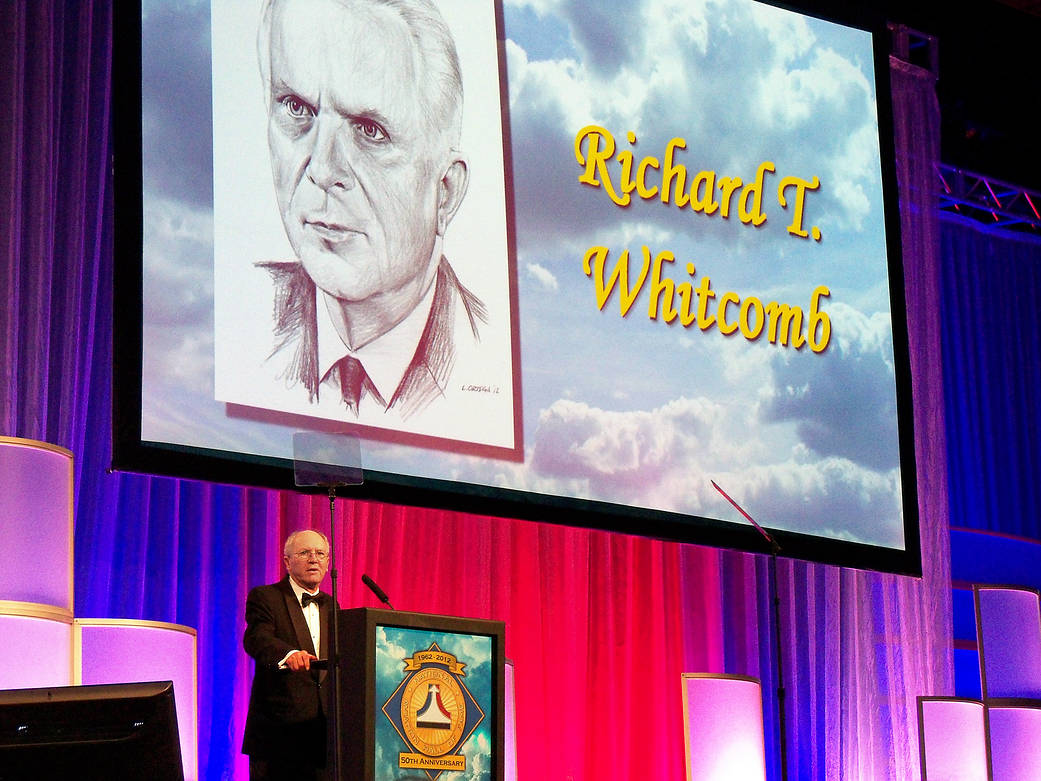
Aeronautics engineer Richard T. Whitcomb, whose legendary research contributions made supersonic flight practical, is a now a member of the National Aviation Hall of Fame, located at the National Museum of the United States Air Force in Dayton.
Retired NASA Langley Director for Aeronautics Roy Harris spoke at induction ceremonies at the Dayton Convention Center about the aerodynamic breakthroughs Whitcomb made in his 37-year career at NASA Langley. His three major contributions include the “area rule,” supercritical wing and winglets.
Whitcomb discovered in 1952 if he narrowed the fuselage of an airplane so it is shaped more like an old-fashioned soda bottle, he could reduce drag and increase the speed of atransonic aircraft without the need to add additional power. The area rule has been applied to almost every U.S. supersonic aircraft designed. The achievement earned him the prestigious 1954 Collier Trophy for the most important aeronautical advance of the year.
If the area rule was Whitcomb’s major accomplishment of the 1950s, his supercritical wing revolutionized the design of jet liners in the 1960s. The key was the development of a swept-back wing airfoil that delayed the onset of increased drag, increasing the fuel efficiency of aircraft flying close to the speed of sound.
In the 1970s Whitcomb came up with winglets, wingtip devices that reduce yet another type of drag and further improve aerodynamic efficiency. Many aircraft currently sport wingtips that are angled up for better fuel efficiency.
Whitcomb is joined by three other honorees this year in the National Aviation Hall of Fame: well-known aviation artist Keith Ferris; female aviation pioneer Geraldine Cobb; and the late Elwood Quesada – an Air Force general and pilot who in 1929 helped develop and demonstrate air to air refueling and was thefirst commander of the USAF Tactical Air Command and the first head of the Federal Aviation Administration.Credit: NASA/Rich Wahls























